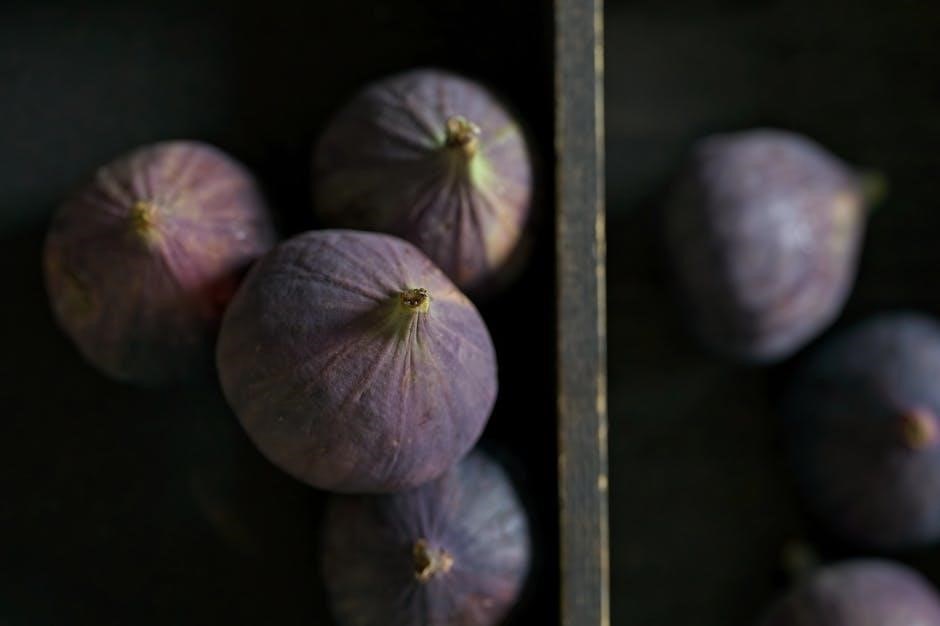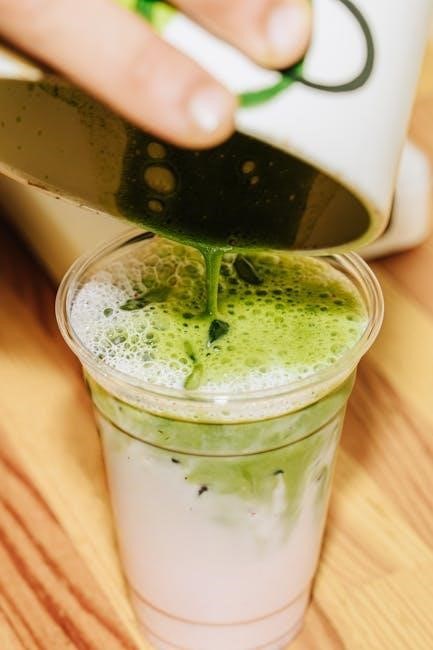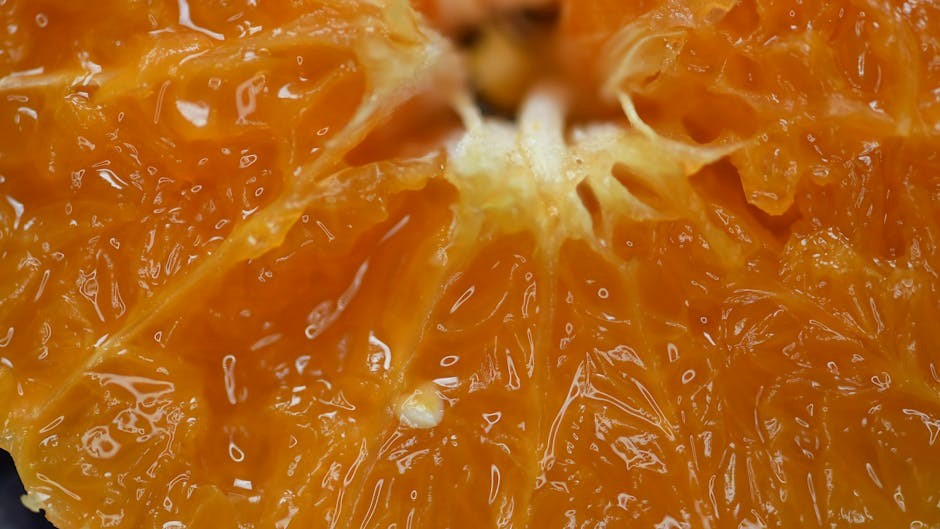Lipedema is a chronic fat disorder requiring tailored dietary approaches. This guide explores how diet impacts symptoms, offering strategies to reduce discomfort and improve quality of life effectively.
1.1. What is Lipedema?
Lipedema is a chronic medical condition characterized by the abnormal growth of fat cells in specific areas of the body, often in the legs and arms. It leads to swelling, pain, and tenderness, particularly when pressure is applied. Unlike obesity, lipedema does not respond to diet or exercise in the same way, as the fat is structurally different. It is more common in women and can progress over time if left untreated. The condition is often mistaken for obesity or lymphedema, but it requires a distinct approach for management and relief.
1.2. Importance of Diet in Managing Lipedema
Diet plays a central role in managing lipedema, as it helps reduce inflammation, improve circulation, and alleviate symptoms. A tailored dietary approach can minimize fat accumulation, enhance lymphatic function, and promote overall well-being. By focusing on nutrient-rich, anti-inflammatory foods, individuals can better control discomfort and swelling. A well-structured diet not only supports physical health but also contributes to emotional resilience, making it easier to cope with the condition. While diet alone cannot cure lipedema, it is a vital component of a comprehensive management plan that improves quality of life and symptom control effectively.
1.3. Purpose of the Guide
This guide is designed to empower individuals with lipedema by providing a comprehensive understanding of dietary strategies to manage symptoms. It aims to clarify the role of nutrition in reducing discomfort, improving mobility, and enhancing overall well-being. By focusing on practical, evidence-based advice, the guide helps readers make informed decisions about their diet and lifestyle. Whether you’re newly diagnosed or seeking to refine your approach, this resource offers clear guidance to support your journey toward better health and confidence.

Understanding Lipedema
Lipedema is a chronic fat disorder affecting primarily women, characterized by abnormal fat cell growth. It impacts lifestyle and requires dietary adjustments to manage symptoms effectively.
2.1. Definition and Overview
Lipedema is a chronic condition characterized by abnormal fat cell growth, leading to painful swelling in the legs, hips, and sometimes arms. It differs from obesity or cellulite, as the fat is structural and causes discomfort. The condition progresses through stages, with early intervention crucial for managing symptoms. Often misunderstood or misdiagnosed, lipedema requires a comprehensive approach, including dietary adjustments, to alleviate pain and improve quality of life. Understanding its definition and overview is essential for developing effective strategies to combat this condition and its impact on daily activities and overall well-being.
2.2. Causes and Risk Factors
Lipedema is influenced by genetic, hormonal, and lymphatic factors. It often affects women, particularly those with a family history. Obesity, hormonal imbalances, and age can exacerbate symptoms. The condition is not caused by poor diet or lack of exercise but may worsen with poor lifestyle choices. Understanding these causes and risk factors is crucial for developing effective management strategies, including dietary adjustments.
2.3. Symptoms and Stages
Lipedema symptoms include pain, tenderness, and abnormal fat distribution, often in the legs and arms. It progresses through stages, starting with soft, movable fat and advancing to hardened tissue. Early stages may involve minimal discomfort, but as the condition progresses, mobility can be impaired. Advanced stages often lead to significant pain, swelling, and difficulty moving. Mental health may also be affected due to the visible changes. Understanding these symptoms and stages is crucial for early intervention and effective management through dietary and lifestyle adjustments.
2.4. Diagnosis and Misdiagnosis
Diagnosing lipedema can be challenging due to its similarity to other conditions like obesity or lymphedema. Proper diagnosis requires a physical exam, patient history, and sometimes imaging. Symptoms such as pain, tenderness, and fat distribution patterns are key indicators. Misdiagnosis is common, leading to delayed treatment. A healthcare provider, often a dermatologist or vascular specialist, should evaluate symptoms thoroughly. Early and accurate diagnosis is crucial for effective management. Misdiagnosis can result in inappropriate treatments, worsening symptoms, and emotional distress. Seeking a specialist experienced in lipedema is essential for a correct diagnosis and timely intervention.
2.5. The Role of Nutrition in Managing Lipedema
Nutrition plays a crucial role in managing lipedema by reducing inflammation, improving circulation, and supporting lymphatic health. A balanced diet helps minimize symptoms like pain and swelling, while specific foods can aid in maintaining healthy tissue and preventing progression. Incorporating anti-inflammatory foods, staying hydrated, and avoiding triggers such as processed sugars and saturated fats are essential. Nutrition not only complements other treatments but also empowers individuals to take control of their condition, enhancing overall well-being and quality of life. A tailored dietary approach is vital for effectively managing lipedema and its associated challenges.
The Lipedema Diet: Basics and Principles
The Lipedema diet is a structured plan focusing on reducing inflammation and promoting lymphatic health through nutrient-rich foods, while minimizing triggers that exacerbate symptoms and fat accumulation.

3.1. What is the Lipedema Diet?
The Lipedema Diet is a tailored eating plan designed to manage symptoms of lipedema, focusing on reducing inflammation, improving circulation, and promoting overall health. It emphasizes anti-inflammatory foods, whole grains, lean proteins, and healthy fats while minimizing processed foods, sugars, and unhealthy fats. The diet aims to create a metabolic environment that supports fat metabolism and lymphatic function, helping to alleviate pain, swelling, and discomfort associated with lipedema. While not a cure, it is a key component of managing the condition alongside exercise and medical treatments.
3.2. Key Principles of the Diet
The Lipedema diet focuses on anti-inflammatory foods, balanced macronutrients, and hydration to reduce symptoms. Emphasize whole, unprocessed foods like lean proteins, vegetables, and healthy fats while minimizing refined sugars and carbs. Portion control and mindful eating are essential to avoid overloading the lymphatic system. Avoid inflammatory triggers such as alcohol and processed foods. Incorporate regular hydration to support lymphatic function and maintain skin health. Consistency and patience are key, as gradual improvements in symptoms are often seen with long-term adherence. Always consult a healthcare professional to tailor the diet to individual needs.
3.3. Foods to Include
Focus on anti-inflammatory, nutrient-dense foods to support overall health and reduce lipedema symptoms. Include leafy greens (spinach, kale), berries (blueberries, raspberries), lean proteins (chicken, fish), and omega-3 rich fatty fish like salmon. Whole grains such as quinoa, brown rice, and oats provide sustained energy and fiber. Healthy fats like avocados, olive oil, and nuts (almonds, walnuts) are beneficial. Incorporate herbs and spices with anti-inflammatory properties, like turmeric and ginger, to enhance meals and reduce inflammation. These foods promote circulation, lymphatic health, and skin integrity, aiding in symptom management and improving quality of life.
3.4. Foods to Avoid
Individuals with lipedema should avoid processed foods, sugary snacks, and refined carbohydrates, as these can exacerbate inflammation and fat storage. Limit foods high in sodium, which can worsen swelling. Avoid alcohol, as it impairs lymphatic function and increases fat retention. Red meat and high-fat dairy products may also contribute to inflammation. Opting for whole, nutrient-dense foods instead of processed items helps manage symptoms. Be cautious of hidden sugars in sauces and dressings, and avoid excessive caffeine, which can dehydrate and worsen circulation. Reducing these foods can significantly support lipedema management and overall health.

3.5. Importance of Hydration
Hydration plays a vital role in managing lipedema by maintaining healthy circulation and lymphatic function. Drinking adequate water helps flush toxins, reduce swelling, and prevent fluid retention. Aim for at least eight glasses daily.
3.6. Portion Control and Meal Frequency
Portion control is essential in managing lipedema, as overeating can exacerbate fat accumulation. Using smaller plates and measuring portions helps maintain balance. Eating smaller, frequent meals throughout the day can stabilize blood sugar levels and metabolism, reducing inflammation. Avoiding large meals prevents digestive strain and promotes better nutrient absorption. Pairing protein with fiber and healthy fats enhances satiety, making portion control easier. Consistency in meal timing supports metabolic health and reduces cravings for unhealthy snacks, aiding in long-term symptom management. Mindful eating practices also play a role in maintaining appropriate portion sizes and meal frequency.

Managing Lipedema Symptoms Through Diet
Diet plays a crucial role in managing lipedema symptoms by reducing inflammation, improving circulation, and supporting lymphatic health, which helps alleviate pain and swelling effectively.
4.1. Reducing Inflammation
Chronic inflammation exacerbates lipedema symptoms, making dietary choices crucial for management. Anti-inflammatory foods like fatty fish, turmeric, and ginger help reduce swelling and pain. Omega-3 fatty acids found in flaxseeds and walnuts combat inflammation, while antioxidants in berries and leafy greens protect cells. Avoiding pro-inflammatory foods such as sugar, refined carbs, and processed meats is essential; Incorporating these strategies into your diet can significantly alleviate symptoms, improving overall well-being and supporting fat metabolism. Balancing these elements is key to managing lipedema effectively through nutrition.

4.2. Improving Circulation
Improving blood flow is crucial for managing lipedema symptoms. A diet rich in omega-3 fatty acids, antioxidants, and flavonoids helps reduce inflammation and enhance vascular health. Foods like fatty fish, berries, and leafy greens promote circulation. Incorporating spices such as turmeric and ginger can also aid blood flow. Staying hydrated with water and herbal teas further supports circulatory function. Regular movement, combined with dietary changes, can significantly improve blood flow, reducing swelling and discomfort in affected areas. A balanced approach ensures better nutrient delivery and waste removal, benefiting overall health and symptom management.
4.3. Supporting Lymphatic Health
A healthy lymphatic system is crucial for managing lipedema, as it aids in reducing swelling and fluid retention. Incorporating foods rich in omega-3 fatty acids, such as flaxseeds and fatty fish, can help minimize inflammation. Antioxidants like vitamin C and E, found in citrus fruits and nuts, protect lymphatic tissues from damage. Adequate fiber intake from vegetables and whole grains promotes proper lymphatic drainage. Staying hydrated is essential, as water helps maintain lymph flow. Avoiding processed foods and excessive salt can further support lymphatic function, reducing overall discomfort and improving circulation in affected areas.
4;4. Minimizing Fatigue
Diet plays a crucial role in reducing fatigue associated with lipedema. Incorporating iron-rich foods like spinach and lean meats can combat anemia, a common cause of tiredness. B vitamins, found in whole grains and eggs, support energy production. Staying hydrated and avoiding sugar spikes help maintain stable energy levels. Additionally, incorporating adaptogenic herbs like ginseng and ashwagandha can naturally boost vitality. Prioritizing nutrient-dense meals and avoiding excessive carbohydrate intake further aids in minimizing fatigue, enhancing overall well-being for lipedema sufferers.
- Eat iron-rich foods to combat anemia.
- Incorporate B vitamins for energy production.
- Stay hydrated and avoid sugar spikes.
- Add adaptogenic herbs for vitality.
4.5. Enhancing Skin Health
A healthy diet plays a crucial role in maintaining skin integrity for individuals with lipedema. Nutrient-rich foods like leafy greens, berries, and fatty fish provide essential vitamins and antioxidants that combat oxidative stress and inflammation. Omega-3 fatty acids found in salmon and flaxseeds help reduce inflammation, while Vitamin C in citrus fruits supports collagen production, improving skin elasticity. Proper hydration is also vital, as water helps flush toxins and maintain skin hydration. Avoiding processed sugars and refined carbohydrates can prevent skin dullness and breakouts. Incorporating these dietary habits not only enhances skin health but also contributes to overall well-being and comfort for those managing lipedema.

Lifestyle Changes to Complement the Diet
Adopting regular exercise, stress management, and adequate sleep supports lipedema management. Avoiding harmful habits like smoking or excessive alcohol further enhances overall well-being and symptom relief.
5.1. Regular Exercise
Regular exercise is vital for managing lipedema, improving circulation, and supporting lymphatic drainage; Low-impact activities like swimming, cycling, or yoga are ideal, as they minimize stress on joints. Strength training can also be beneficial when done carefully to avoid overexertion. Exercise helps reduce inflammation, enhances mobility, and supports overall metabolic health. Aim for at least 3-5 moderate sessions per week, lasting 30-45 minutes. Consistency is key to seeing improvements in symptoms and overall well-being. Always listen to your body and consult a professional to tailor a routine that suits your needs and abilities.
5.2. Stress Management
Stress management is crucial for overall well-being, especially when managing lipedema. Chronic stress can lead to increased cortisol levels, which may exacerbate inflammation and fat storage. Techniques like mindfulness, meditation, and yoga can help reduce stress and improve emotional resilience. Incorporating relaxation practices into your daily routine can also enhance sleep quality and energy levels. Additionally, activities such as deep breathing exercises or journaling can provide mental clarity and reduce stress-related cravings for unhealthy foods. By managing stress effectively, individuals with lipedema can better adhere to their diet and lifestyle changes, promoting long-term health and symptom relief.
5.3. Sleep and Recovery
Sleep and recovery play a crucial role in managing lipedema symptoms. Adequate rest helps reduce inflammation, supports lymphatic drainage, and promotes tissue repair. Poor sleep can exacerbate pain and swelling, while quality sleep enhances overall well-being. Establishing a consistent sleep schedule, creating a relaxing bedtime routine, and avoiding stimulants can improve sleep quality. Prioritizing recovery through rest and stress management further supports symptom relief and long-term health. Incorporating these practices into daily life complements dietary efforts, fostering better physical and emotional resilience in managing lipedema effectively.

5.4. Avoiding Harmful Habits
Eliminating harmful habits is crucial for managing lipedema. Smoking and excessive alcohol consumption can worsen inflammation and impair circulation, exacerbating symptoms. A sedentary lifestyle also contributes to poor lymphatic drainage and fat accumulation. To avoid these habits, focus on gradually reducing unhealthy practices. Consider quitting smoking with professional guidance or limiting alcohol intake. Incorporate regular physical activity and stress management techniques to reduce cravings. Avoiding prolonged sitting and staying hydrated can also support overall health. Setting realistic goals and seeking support from loved ones or support groups can help maintain healthier habits and improve lipedema management. Consistency is key to long-term success.

Meal Planning and Recipes
Creating balanced meals is key to managing lipedema. Focus on anti-inflammatory foods, lean proteins, and whole ingredients. Discover nutritious recipes and a sample meal plan to simplify your journey.
6.1. Breakfast Ideas
Start your day with nutrient-rich, anti-inflammatory breakfast options. Consider scrambled eggs with spinach, avocado, and tomatoes, or Greek yogurt with fresh berries and a sprinkle of chia seeds. Oatmeal topped with nuts and a drizzle of honey is another great choice. Smoothies made with leafy greens, almond milk, and frozen fruit can be quick and nourishing. For a protein-packed option, try smoked salmon on whole-grain toast with a squeeze of lemon. These breakfast ideas promote energy, reduce inflammation, and support overall health while adhering to the principles of the Lipedema diet.
6.2. Lunch and Dinner Options
For lunch and dinner, focus on balanced, nutrient-dense meals rich in lean proteins, vegetables, and healthy fats. Grilled chicken, fish, or tofu paired with quinoa, brown rice, or roasted vegetables are excellent options. Incorporate anti-inflammatory herbs like turmeric and ginger. Salads with mixed greens, avocado, and olive oil dressing are also ideal. Avoid processed meats, sugary sauces, and refined carbohydrates. Opt for steamed or sautéed dishes to retain nutrients. Examples include chicken stir-fries with broccoli, salmon with asparagus, or lentil soups. These meals support lymphatic health and reduce inflammation, aligning with Lipedema management goals.
6.3. Snacks and Desserts
Healthy snacks and desserts are essential for managing lipedema. Opt for nutrient-dense options like fresh fruits, veggie sticks with hummus, or a handful of nuts and seeds. For desserts, consider low-sugar alternatives such as chia pudding, fruit salads, or dark chocolate (70% cocoa or higher). These choices help curb cravings while supporting overall health. Avoid processed sugars, artificial sweeteners, and unhealthy fats. Incorporate anti-inflammatory spices like cinnamon or turmeric for added benefits. Portion control is key to maintaining a balanced diet. These snacks and desserts can be both satisfying and supportive of your lipedema management journey.
6.4. Sample Meal Plan
A sample meal plan for lipedema might include:
- Breakfast: Oatmeal with berries, chia seeds, and a drizzle of olive oil.
- Lunch: Grilled chicken salad with mixed greens, avocado, and olive oil dressing.
- Dinner: Baked salmon with steamed vegetables and quinoa.
- Snacks: Sliced cucumber, carrots, and hummus or a handful of almonds.
This plan emphasizes anti-inflammatory foods, lean proteins, and healthy fats, while avoiding triggers like sugar and processed foods. Adjust portions based on individual needs and preferences.
Monitoring Progress and Adjustments
Regularly track weight, measurements, and symptom improvements. Adjust dietary plans based on progress, and consult professionals to refine strategies for better results and overall well-being.
7.1. Tracking Weight and Measurements
Regularly monitoring weight and measurements is crucial for assessing progress in managing lipedema. Use a tape measure to track changes in affected areas, such as thighs, hips, and arms. Record these measurements weekly to observe improvements over time. Weight fluctuations may not always reflect fat loss accurately, as muscle gain or water retention can influence the scale. Focus on inches lost rather than pounds, as this better indicates fat reduction. Maintain a journal or spreadsheet to log data, and consider progress photos for visual motivation. This practice helps identify patterns and informs adjustments to your diet and exercise routine. Consistency is key to understanding your body’s response and staying motivated.
7.2. Adjusting the Diet as Needed
As individuals progress with the lipedema diet, periodic adjustments are essential to optimize results. Symptoms and body responses can vary, requiring tailored tweaks to food choices and portion sizes. Common adjustments include increasing protein intake for muscle support, reducing carbohydrate consumption if fat loss plateaus, or incorporating more anti-inflammatory foods. Monitoring progress through symptom journals and body measurements helps identify when changes are necessary. Regular consultations with a healthcare provider or nutritionist ensure adjustments align with personal health goals, preventing potential missteps and fostering long-term success. Continuous adaptation is key to managing lipedema effectively.

7.3. Seeking Professional Guidance
Consulting with healthcare professionals, such as nutritionists, dietitians, or lymphatic therapists, is crucial for personalized advice. They can create tailored meal plans, monitor progress, and address specific challenges. Regular check-ins ensure accountability and adjustments as needed. Additionally, professionals can help identify underlying issues affecting lipedema progression. Seeking expert guidance fosters a supportive environment, enhancing overall well-being and long-term success. Collaborating with specialists ensures a comprehensive approach to managing lipedema through diet and lifestyle changes. This teamwork is essential for achieving sustainable improvements and maintaining motivation throughout the journey.
Embracing a tailored diet empowers lipedema management. Stay consistent, seek professional guidance, and explore further resources to optimize your journey toward improved health and well-being confidently.
8.1. Summary of Key Points
- Focused nutrition and lifestyle changes are key to managing lipedema.
- Consistency and awareness drive lasting improvements.
- Professional guidance tailors strategies to individual needs.
8.2. Encouragement and Motivation
Embracing a Lipedema-friendly diet is a powerful step toward reclaiming your health. Remember, progress is more important than perfection. Each healthy choice brings you closer to relief and well-being. Celebrate small victories, like increased energy or reduced discomfort, as they add up over time. Surround yourself with support, whether from loved ones or online communities, to stay motivated. Believe in your journey—every effort counts, and your commitment to self-care is worth it. Keep moving forward; better days are ahead.
8.3. Resources for Further Reading
For deeper understanding, explore books like “Lipedema: The Disease They Don’t Teach You About” and online resources from the Lipedema Foundation. Medical journals such as The Journal of Lymphology offer research insights. Online forums and support groups provide patient perspectives and shared experiences. Websites like Healthline and Mayo Clinic offer evidence-based articles. Additionally, consult with healthcare professionals for personalized advice. These resources will help you stay informed and empowered in managing lipedema effectively. Remember, knowledge is a powerful tool in your journey toward better health and well-being.





